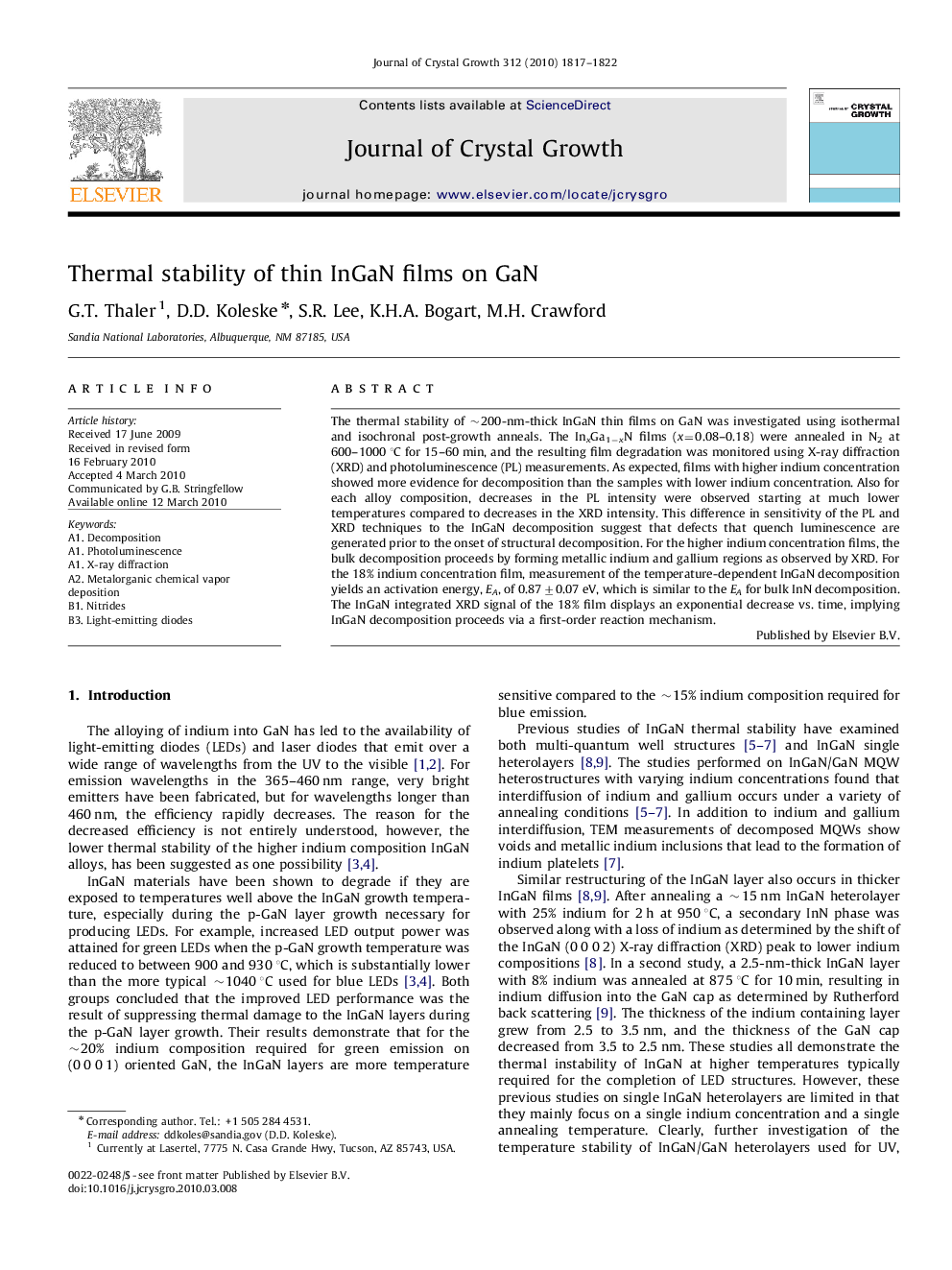| Article ID | Journal | Published Year | Pages | File Type |
|---|---|---|---|---|
| 1792590 | Journal of Crystal Growth | 2010 | 6 Pages |
The thermal stability of ∼200-nm-thick InGaN thin films on GaN was investigated using isothermal and isochronal post-growth anneals. The InxGa1−xN films (x=0.08–0.18) were annealed in N2 at 600–1000 °C for 15–60 min, and the resulting film degradation was monitored using X-ray diffraction (XRD) and photoluminescence (PL) measurements. As expected, films with higher indium concentration showed more evidence for decomposition than the samples with lower indium concentration. Also for each alloy composition, decreases in the PL intensity were observed starting at much lower temperatures compared to decreases in the XRD intensity. This difference in sensitivity of the PL and XRD techniques to the InGaN decomposition suggest that defects that quench luminescence are generated prior to the onset of structural decomposition. For the higher indium concentration films, the bulk decomposition proceeds by forming metallic indium and gallium regions as observed by XRD. For the 18% indium concentration film, measurement of the temperature-dependent InGaN decomposition yields an activation energy, EA, of 0.87±0.07 eV, which is similar to the EA for bulk InN decomposition. The InGaN integrated XRD signal of the 18% film displays an exponential decrease vs. time, implying InGaN decomposition proceeds via a first-order reaction mechanism.
